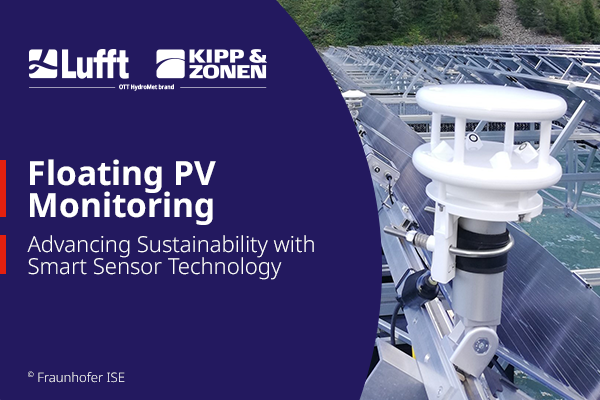In situ nitrate measurement is popular because of the importance nitrate concentration has to the health of natural water bodies. Unnaturally high nitrate concentration may lead to excessive algae and plant growth that have unwanted effects. Instrument-based nitrate measurements made in situ allow more frequent sampling than what would be practical or cost effective from grab samples analyzed on laboratory equipment. More frequent measurements are helpful for improving total maximum daily load (TMDL) estimates, water quality model accuracy, and timeliness of decisions about water resource management.

There are several nitrate measurement approaches. Each has different attributes that should be considered when selecting the most appropriate sensor for an application. The most common approaches for in situ nitrate measurements leverage UV (ultraviolet) spectrophotometry and electrochemically-based ion selective electrodes (ISE). Sensors that leverage both approaches are available from OTT Hydromet. The Sea-Bird Coastal SUNA V2 is a UV spectrophotometer and Hydrolab multiparameter sondes are available with a nitrate ISE.

The Hydrolab ISE approach is the lowest cost, has a broad range, and is not influenced by color or turbidity. However, the ISE has relatively low accuracy, is subject to ionic interferences, and is subject to calibration drift. The SUNA V2 has relatively high accuracy, resolution, and precision plus a fast response time. However, it has a high cost, higher power requirement, and is subject to optical interferences. Use the table for a summary.

Reference: USGS techniques and methods document Optical Techniques for the Determination of Nitrate in Environmental Waters: Guidelines for Instrument Selection, Operation, Deployment, Maintenance, Quality Assurance, and Data Reporting by Brian A. Pellerin, Brian A. Bergamaschi, Bryan D. Downing, John Franco Saraceno, Jessica D. Garrett, and Lisa D. Olsen
For more information or help with nitrate measurements with OTT Hydromet equipment, visit www.ott.com or contact the technical support team at techsupport@otthydromet.com.


